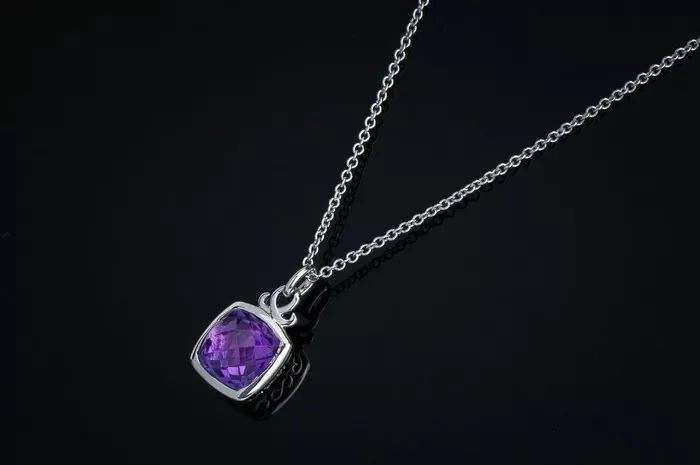Amethyst, a member of the quartz family, is renowned for its captivating purple hues. This gemstone has fascinated people for centuries due to its beauty and the mystical beliefs surrounding it. Among the myriad shades of amethyst, some colors are particularly rare and highly valued. Identifying where these rare colors are found requires a combination of geological knowledge, mining expertise, and a deep understanding of the gemstone market. This article aims to provide a comprehensive exploration of where the rarest amethyst colors are found, drawing on the expertise of jewelry appraisers and gemologists.
Introduction to Amethyst and Its Colors
Amethyst is a variety of quartz characterized by its purple coloration. The color of amethyst is caused by trace amounts of iron and other impurities within the quartz crystal structure. This gemstone occurs naturally in a variety of shades, ranging from delicate lavender to deep, rich reddish-purple tones. While all shades of amethyst are beautiful, some colors are particularly rare and highly sought after by collectors and jewelers. These rare colors often command higher prices due to their scarcity and unique aesthetic appeal.
Geological Occurrence of Amethyst
Amethyst is typically found in igneous and metamorphic rocks, particularly in volcanic and sedimentary environments. The formation of amethyst crystals often begins when silicon-rich magma cools and solidifies, forming quartz veins within the rock. Over time, trace elements such as iron and aluminum can be incorporated into the quartz crystal structure, giving rise to the purple coloration of amethyst.
The largest deposits of amethyst are found in volcanic rocks worldwide, with Brazil and Uruguay being notable producers. These countries are known for their extensive amethyst mines, which yield large quantities of the gemstone in a variety of shades. However, it is important to note that the rarity of a particular amethyst color is not solely determined by its geographical origin. Instead, it is influenced by a combination of factors, including the composition of the host rock, the temperature and pressure conditions during crystallization, and the presence of trace elements.
Identifying Rare Amethyst Colors
When it comes to identifying rare amethyst colors, several factors must be considered. The finest amethyst colors are typically described as strong reddish-purple or purple with no visible color zoning. Dealers prefer strongly saturated reddish-purple to dark purple, as long as the stone is not so dark that it reduces brightness. If the color is too dark, an amethyst might look black under dim lighting conditions.
One of the rarest amethyst colors is known as “Siberian purple.” This shade is named after the region in Russia where some of the deepest purple stones were once found. Siberian purple amethyst is characterized by its intense, dark purple hue with a slight reddish tint. This color is highly valued due to its scarcity and the depth of its coloration.
Another rare amethyst color is found in African material, particularly from Zambia. Zambian amethyst is known for its highly saturated raspberry color, which tends to have more inclusions than Brazilian material. Despite these inclusions, Zambian amethyst is highly valued due to its remarkable color and the unique aesthetic appeal it brings to jewelry designs.
Mining and Production of Rare Amethyst Colors
The mining and production of rare amethyst colors require specialized techniques and equipment. Amethyst is typically mined using open-pit or underground methods, depending on the size and depth of the deposit. Once the gemstone is extracted, it undergoes a series of processing steps, including cleaning, cutting, and polishing, to bring out its natural beauty and enhance its value.
During the mining process, careful selection is crucial to identify and separate rare amethyst colors from more common shades. This often involves visual inspection and the use of specialized equipment, such as gemological microscopes and spectrophotometers, to analyze the color and clarity of the gemstones.
Once the rare amethyst colors are identified and separated, they are often sent to skilled cutters and polishers who specialize in working with high-quality gemstones. These professionals use their expertise and precision to cut and polish the amethyst, bringing out its natural beauty and maximizing its value.
Market Dynamics and Valuation of Rare Amethyst Colors
The market for rare amethyst colors is driven by a combination of factors, including supply and demand, scarcity, and aesthetic appeal. As with any gemstone, the rarity of a particular color can have a significant impact on its value. The most rare and sought-after colors, such as Siberian purple and Zambian amethyst, often command the highest prices due to their scarcity and unique aesthetic appeal.
In addition to rarity, other factors can also influence the value of rare amethyst colors. These include clarity, cut, carat weight, and origin. High-clarity amethyst with no visible inclusions and a well-cut gemstone can fetch higher prices due to their superior appearance and the increased demand for high-quality gemstones in the market.
Furthermore, the origin of the amethyst can also play a role in its valuation. While many countries produce amethyst, some regions are known for producing higher-quality gemstones due to favorable geological conditions and mining practices. For example, Brazilian amethyst is often highly valued due to its consistent color and clarity, while Zambian amethyst is sought after for its unique raspberry color and saturation.
Conclusion
Identifying where the rarest amethyst colors are found requires a combination of geological knowledge, mining expertise, and a deep understanding of the gemstone market. While Brazil and Uruguay are notable producers of amethyst, rare colors such as Siberian purple and Zambian amethyst can be found in specific regions worldwide. The value of these rare colors is influenced by a variety of factors, including supply and demand, scarcity, clarity, cut, carat weight, and origin.
Related topic:
- How to Style Your Amethyst Tree Necklace Like a Pro
- Chic Amethyst Slice Necklace: Wear Your Inner Peace
- Vibrant Amethyst Topaz Necklace: A Jewel for Every Heart


